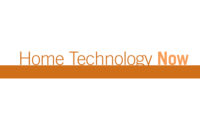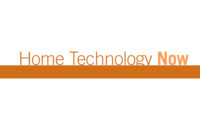
|
Coming from an industry that has a strong background in high-performance audio systems, talking about “wireless speakers” among peers has traditionally been viewed akin to using a four-letter word during a religious service. However, with significant advancements in recent years in high-speed wireless data transmission, the myth that “wireless sucks” is being dispelled quickly. Many manufacturers of mid-level to high-end audio products are now offering very compelling wireless speaker solutions that perform on par with their wired counterparts. With retrofit projects accounting for more than 70 percent of revenue for CEDIA member companies (according to CEDIA’s annual market research report –Size and Scope of the Residential Electronic Systems Market in the US©), these new products could not have come at a more opportune time.
Having spent the early years of my career working almost exclusively on retrofit projects, I have some first-hand insight regarding the unavoidable headaches that come along with running cable in a finished home. Practically every retrofit project in memory has required overcoming cable-pulling roadblocks that never could have been identified during a common site survey. Whether your business model is based on T&M or a la carte pricing, this wide variation in required installation time can make it very difficult to provide an accurate quote for your clients, which, in the end, results in either a very unhappy customer or a very under-paid integrator. Unless you are a magician, and have identified the secret spell to wire a house by osmosis, wireless speakers can remove these issues.
Some of the current buzz in the industry regarding wireless speakers has been coming from integrators who are concerned about wireless speakers being a do-it-yourself (DIY) threat. While the option to simply connect devices over a wireless network clearly requires less physical labor than drilling holes and pulling cable, it does not by any means make it easier to create a reliable system. In regards to performance and reliability, wireless technologies have come a long way in recent years. However, with more and more wireless devices being crammed into homes every day, the available RF frequency spectrum has been filled to capacity and interference has become a major issue that these products must contend with in real world applications. This means that integrators have an opportunity to make money by conducting RF site surveys in order to ensure that the system is configured to perform at its absolute best and these wireless devices all operate reliably day in and day out.
In addition to being the expert on wireless technologies, integrators also have valuable knowledge and experience in the realm of audio and acoustics that cannot be ignored when designing a media room, home theater, or distributed audio system. Even though connecting the speakers may be easier, they still must be placed appropriately in the room to create the correct listening environment.
Finally, professional calibration is an absolute necessity to ensure proper focus, envelopment, clarity and seat-to-seat consistency. These are all skills that tech pros should be making money on and very few DIY consumers can compete with. (For more information, see CEA/CEDIA-CEB22 Home Theater Recommended Practices: Audio Design).
What’s the bottom line with wireless speakers? Clients want them!
Customers were asking about wireless speakers from the first day I started working in this industry 12 years ago, and the requests have never stopped. High-performance wireless speakers have opened the door to an entirely new market of consumers that want the technology, reliability, and performance of a high-quality surround sound system, but aren’t willing to allow the intrusion of traditional retrofit methodologies.
Wireless systems also allow scalability, which means clients who have gotten a taste of a quality audio system will continue coming back to upgrade (from 5.1 to 7.1 or three zones to four or five zones) for years to come.
To learn more about wireless speaker systems check out CEDIA’s new white paper and view archived webinars on the topic at CEDIA.net/elearning.
The aforementioned conversation that has to occur between devices is actually called the HDMI initialization sequence (commonly called “handshake”) and the first step in this sequence is known as “Hot Plug.” Hot Plug is a +5v signal sent between the source and display, acknowledging that they are connected to each other. This is the wakeup call telling both devices to begin sharing information. If the +5v Hot Plug pulse does not occur, or attenuates to the point of being below the threshold voltage, then you basically get nothing. Game over — go directly to troubleshooting; do not pass go, do not collect picture or audio.
The second step in the initialization sequence is known as the Extended Display Identification Data (EDID) standard. It was originally developed by the Video Electronics Standards Association (VESA) to support plug-and-play functionality within the computer community. The idea is that by having a display share its formatting/processing capabilities with the source, a consumer would always experience the highest-quality video and audio within the system’s capabilities. While fantastic in theory, manufacturers have struggled somewhat with implementing EDID correctly across all products since its adoption within the consumer electronics space. Because a display’s EDID is responsible for instructing the source on how to format and send the A/V information, incorrect communication may cause all sorts of seemingly odd anomalies — stereo instead of multi-channel audio, wrong aspect ratios, incorrect colorimetry, lower-than-optimal resolutions, or even no video/audio at all. It is important to note that the complexities of EDID processing increase exponentially when using HDMI splitters or matrix switches connected to multiple displays with differing EDIDs.
The final step in the “handshake” process is copyright authentication, also known as High-Bandwidth Digital Content Protection (HDCP). I have often heard it affectionately referred to within the industry as “Hollywood’s Defense against Chinese Piracy.” HDCP was developed by Intel as a copy-protection scheme requiring key exchanges between authorized devices before allowing content to be viewed. While this may seem perfectly reasonable and easy to execute on the surface, there are multiple factors that contribute to authentication failures within a significant number of HDMI systems.
First, even though HDMI v1.0 was officially launched in 2003, no HDCP compliance testing specifications existed until 2006. Second, the HDMI specification allows for up to 127 different “key” values per device; yet, many manufacturers assume their source device will be connected to only one display, and therefore implement a measly one to three keys. This can be a major problem if you are sending the signal from that source to multiple destinations. Unless the splitter/matrix switch you’re using has the ability to monitor and enforce HDCP compliance internally, when more displays are connected than there are keys for the source to hand out, you will typically end up with either the “flashing screen of death” or a beautiful image of the environment described by Edgar Allen Poe in the “Pit and the Pendulum.” Lastly, it is possible for manufacturers to issue firmware updates affecting the way HDCP is handled by their devices and these updates can break a system of devices that were previously working together quite well.
While this exercise of peeling back the jacket to expose the internal workings of HDMI may not have been quite as exciting as watching an everyday object transform itself into a walking, talking, superhero robot, hopefully it has given you some ideas about how to be successful when dealing with the complexities of today’s most popular digital video transmission medium. Armed with this knowledge (which is almost as cool as being armed with a plasma cannon, right?), it is now your job to go out and provide your clients with systems of the highest quality and reliability.
To learn more, check out the CEDIA Marketplace online or use the CEDIA app on your smartphone to find our white paper series on HDMI. Be sure to keep an eye on the CEDIA calendar of events for in-person and hands-on training sessions, including the Home Theater Boot Camp and HDMI Workshop.




